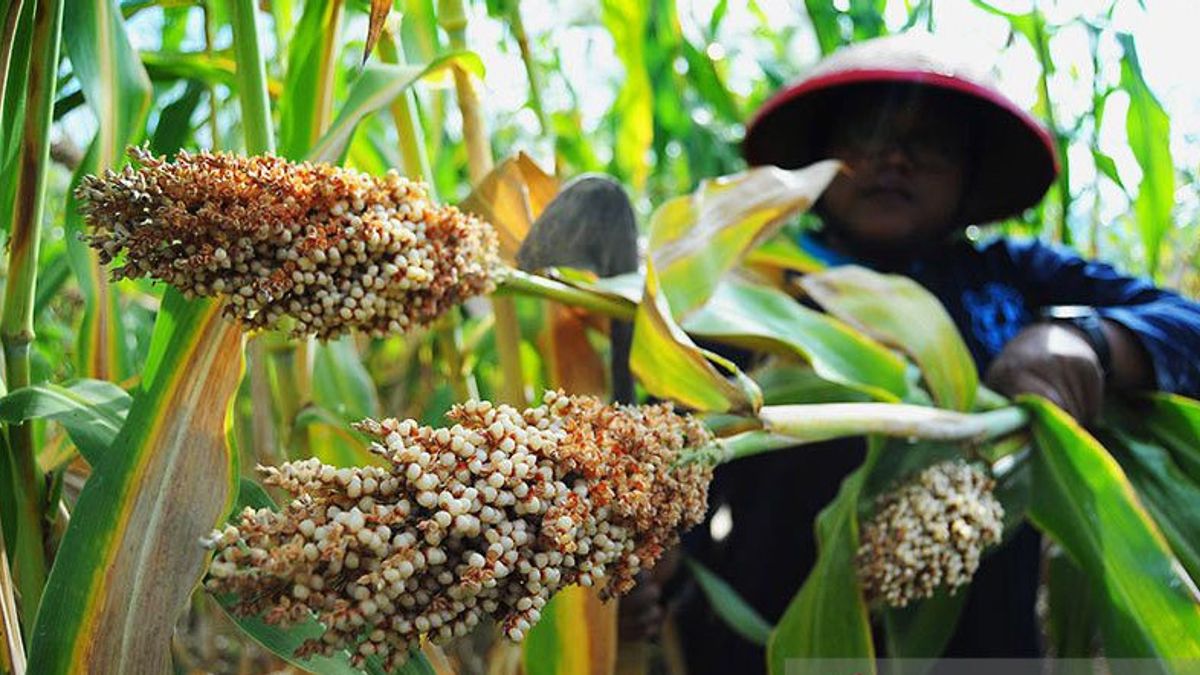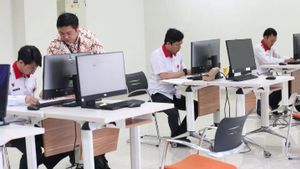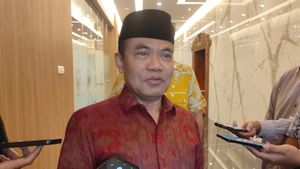JAKARTA - The COVID-19 pandemic for more than two years, the Russian-Ukrainian war that has yet to end, the uncertain global climate change, have had a negative impact on the world's population. The impact is felt directly by the community, one of which is the threat of a food crisis.
Since the beginning of the year, the World Food Organization (FAO) and the United Nations (UN) have warned all countries to prepare for a food crisis. The indicators are clear now. A number of rice and wheat producing countries experienced a decline in production and even crop failure due to extreme rains.
Data from the United States Department of Agriculture (USDA) said global wheat supply in 2022/2023 is expected to fall to 1.1 million tons.
Likewise for rice, the prospect of global rice for 2022/2023 for supply, consumption and stock is lower. Supply is projected to decrease by 1.3 million tonnes to 701.4 million tonnes due to lower initial stocks in India and Pakistan. Coupled with production cuts from the EU and the United States. EU production is expected to be at its lowest level since 1995/1996 due to severe droughts in Italy and Spain, the two largest rice-producing countries in the EU.

"This has been seen, world food prices have all gone up. Therefore, there must be a big plan, there must be a plan for our country to face the threat of a food crisis," said President Jokowi after planting seeds and observing the sorghum harvest in East Sumba, East Nusa Tenggara (NTT), Thursday (2/6), quoted from the Presidential Secretariat YouTube. According to Jokowi, there are many choices of food ingredients that can be developed in Indonesia so that dependence on rice can be reduced. Among other things with the development of sorghum.
“In East Sumba, it has been quite successful. In 1 hectare of land, it can produce 4 tons per month," said President Jokowi.
Apart from being a food security solution, according to the Presidential Chief of Staff, General Moeldoko, sorghum also has great potential as an industrial value.
“So far, it is still managed traditionally only for home needs. If managed properly, sorghum has great added value," said General Moeldoko in a press release on June 6, 2022.
Wasteless Crop Sorghum
The benefits can be as a source of food, feed, energy, fiber, pharmaceutical ingredients, organic fertilizers, and other fun benefits such as handicraft materials. In terms of carbohydrates, said professor from the Bogor Agricultural Institute, Supriyanto, sorghum is better than rice. "Sorghum per 100 grams is only 73 grams and 332 kilo calories, while rice is 78.9 grams and 360 kilo calories."
In addition, sorghum is superior in protein content, per 100 grams only 11 grams of protein, 28 mg of calcium, 44 mg of iron, and 287 mg of phosphorus. Likewise, the sugar content, sorghum has more fructose than glucose.
"So, suitable for diabetics," he said.
Professor Supriyanto has been conducting research on sorghum since 2011. According to him, sorghum has long been one of the five staple foods of the world community. It is an alternative commodity for food, animal feed, bioenergy, and the pharmaceutical and chemical industries, which are not easily affected by pests. It also contains lignin, high fiber to flavonoid compounds which are part of antioxidants.
Academician of the Department of Biotechnology, University of Indonesia, Kaseno also agrees. Sorghum is a zero-waste agricultural product. Every part of sorghum can be used.

“The seeds can be processed into rice and processed into flour. The stems can be processed into sugar, crystal sugar, or bioethanol. After all these processes, the remaining stems, leaves and roots can be processed into agricultural fertilizer and animal feed," he said as quoted by Tribunnews.
Unfortunately, this plant, known as cantel in Java, is not as popular as rice. In fact, the cultivation process is not too difficult because sorghum is a stubborn plant. Can live on dry land though. Suitable for tropical climates like Indonesia.
According to the Program Manager for Indonesia Berseru, Ida Pardosi, there are several factors that make it difficult for alternative food, especially sorghum, to live in Indonesia. Among other things, the national food policy still places rice as the main food. Thus, the majority of the land began to be eroded by other food crops. Otherwise, the rice fields become oil palm plantations, for example in Riau and Papua.”
"Another factor is people's consumption patterns that have begun to change due to the massive promotion of rice, bread, and instant noodles," said Ida as reported by VOI in 2020.
Sorghum Development Commitment
However, it was different this time. General Moeldoko is committed to further popularizing sorghum as an alternative food in Indonesia. "We have gathered food technology experts to discuss the prospects for sorghum in the future, both in terms of cultivation based on research and in terms of industrialization."
Nuclear power research institutes under the auspices of the National Research and Innovation Agency (BRIN) have also developed three superior varieties of sorghum seeds, namely Pahat (Samurai 1 and Samurai 2 healthy food). The results of his research have even been widely used by farmers in Africa.

"There are research results that can increase the age of sorghum productivity from being harvested after 90 days to being harvested after 70 days, even the yield which is usually 3 tons per hectare with technology can be developed to 7-8 tons per hectare," he continued.
"Nowadays we have to think about how to build a sorghum industry so that farmers are enthusiastic about planting. Sorghum farmers must farm for a living. This is the key," said the man who is known as the Indonesian Mr. Sorghum.
This term is familiar because of General Moeldoko's consistent efforts to popularize sorghum as an alternative food for the people of Indonesia.
Baca juga:
- https://voi.id/bernas/194627/akankah-citayam-fashion-week-menjadi-harajuku-baru
- https://voi.id/bernas/194221/tak-perlu-banyak-parpol-di-pemilu-2024-tiga-atau-maksimal-lima-sudah-cukup
- https://voi.id/bernas/193895/menyoroti-isu-taman-nasional-komodo-mulai-kritik-unesco-hingga-harga-tiket-mahal
- https://voi.id/bernas/193545/hari-anak-nasional-2022-sinergitas-jadi-poin-penting-mewujudkan-indonesia-laik-anak
- https://voi.id/bernas/193110/kasus-perundungan-anak-setubuhi-kucing-di-tasikmalaya-jadi-bukti-ekosistem-pendidikan-di-indonesia-masih-rentan
[/see_also
The English, Chinese, Japanese, Arabic, and French versions are automatically generated by the AI. So there may still be inaccuracies in translating, please always see Indonesian as our main language. (system supported by DigitalSiber.id)









